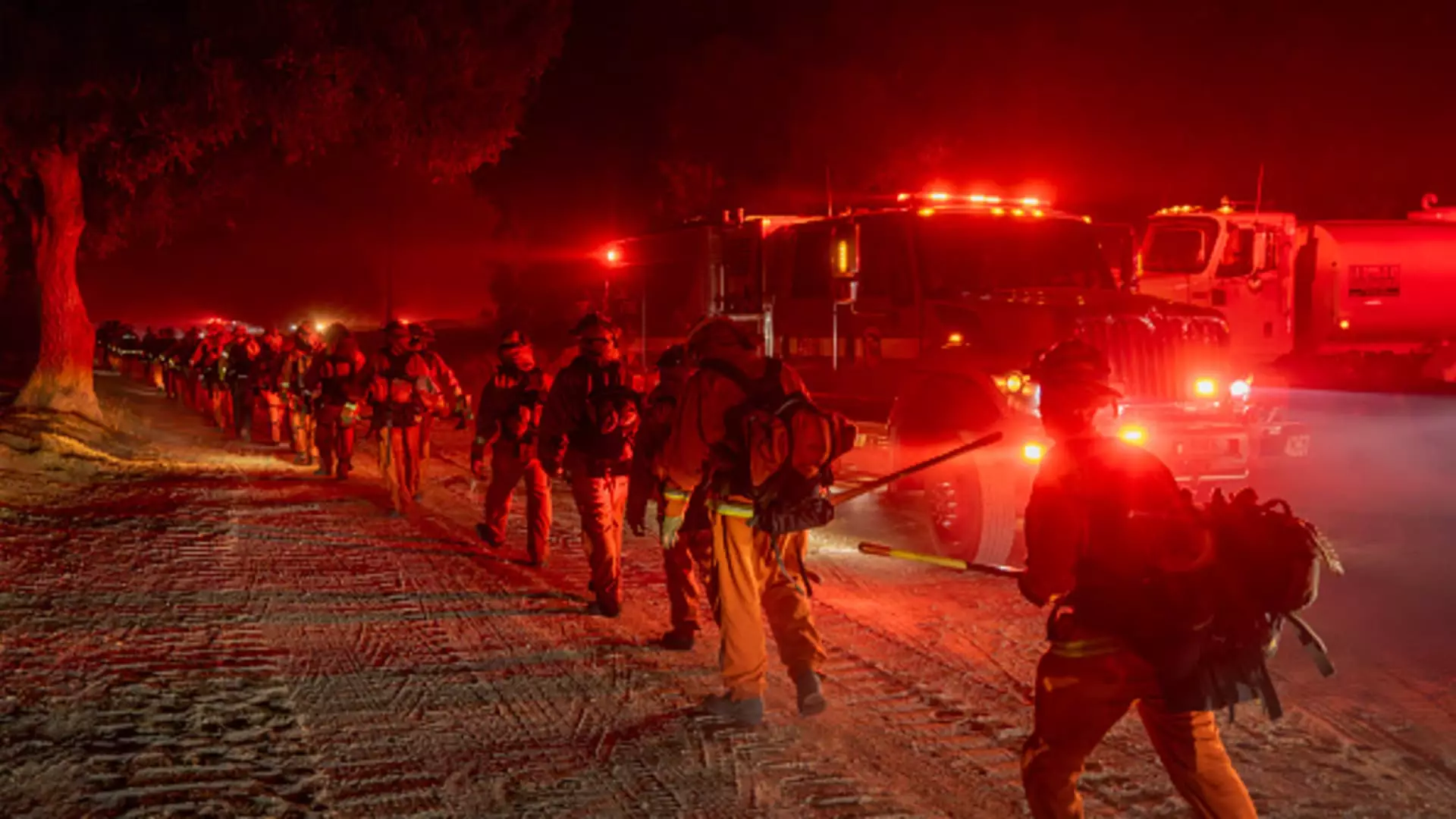In an alarming twist of events, Los Angeles has been engulfed in a series of ferocious brush fires that have left communities on high alert. The latest, significantly concerning incident, dubbed the Hughes Fire, erupted near Castaic Lake. Within mere hours, this inferno morphed from a manageable fire to a catastrophic blaze, consuming thousands of acres of land and posing a substantial threat to lives and property. Firefighters, battling the oppressive climate conditions created by Santa Ana winds, reported that the fire had already scorched over 10,000 acres by Thursday evening.
By Thursday, officials from the California Department of Forestry and Fire Protection, or Cal Fire, indicated that the Hughes Fire was approximately 36% contained. Fortunately, despite its rapid spread, structural damages were not reported, a testament to the coordination among emergency services. In a bid to ensure public safety, over 31,000 residents were ordered to evacuate but these mandatory directives were lifted by Thursday afternoon. However, the lingering threat kept around 54,900 individuals under an evacuation warning, urging them to remain prepared for sudden evacuations.
Battalion Chief Brent Pascua provided insight into the complexities of firefighting in such challenging conditions, noting the blaze’s accelerated pace exacerbated by the exceptionally dry brush and strong winds typical of the Santa Ana phenomenon. With the region under close scrutiny for extreme weather conditions, emergency services faced an uphill battle, striving not only to contain this fire but prevent further disasters as the region has weathered similar fires mere weeks beforehand.
Just weeks prior, Los Angeles had been ravaged by the Palisades and Eaton fires, which collectively took the lives of at least 28 individuals and left countless homes in ashes. The context of this recent inferno paints a vivid picture of urgency; the past disasters have left deep scars on communities that are still recovering. These previous incidents were intense, fueled by hurricane-force winds, which not only prompted mass evacuations but also posed significant challenges for firefighting crews unable to mobilize aircraft in the face of such treacherous conditions.
As firefighters battled the flames of the Hughes Fire, the echoes of the tragic losses from the earlier fires hung heavy in the air – a reminder of the dangers posed by climate change and the increasingly frequent extreme conditions that contribute to the perilous fire season. Los Angeles has emerged as a battleground where firestorms not only threaten the immediate safety of the population but also pose long-term socioeconomic challenges.
Experts are now keen to underline the exacerbating role of climate change in shaping these perilous environments. The connection has become impossible to ignore, as weather patterns shift, and the risk of wildfires grows exponentially. With overarching issues like global warming leading to hotter, drier climates, the stage is set for more frequent and severe fire threats in Southern California.
The Eaton Fire, which has consumed over 14,000 acres, and the Palisades Fire, extending beyond 23,400 acres, are stark reminders of how quickly nature can turn devastating. The damage wrought upon communities is immeasurable as thousands of homes have been lost, and the psychological toll on the residents has yet to be fully assessed. The wave of destruction brought by these fires raises pertinent questions about preparedness in a landscape continually threatened by evolving climate conditions.
As Los Angeles continues to wrestle with the immediate repercussions of the Hughes Fire, vigilance and preparedness remain paramount. The recent disasters highlight not only the ferocity of nature when combined with climatic changes but also the resilience of communities that must adapt and prepare for such eventualities. As firefighters work tirelessly to curb the flames, the community’s spirit to come together in the wake of disaster signifies an enduring hope amidst the chaos. The road to recovery may be long, but a collective commitment to resilience and proactive measures can pave the way forward for a safer future.


Leave a Reply